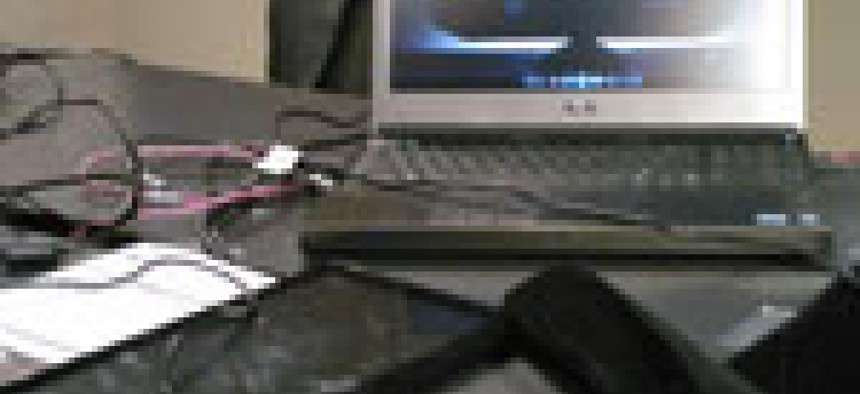Microsoft Kinect takes a swipe at visualization, geospatial apps


Connecting state and local government leaders
Microsoft's Kinect can take inputs from a mouse, stylus, touch, voice or a motion-sensing device.
Government agencies with geospatial or data visualization requirements might want to take at a close look at Microsoft’s Kinect for Windows, the motion-sensor peripheral originally created for the Xbox 360.
The InfoStrat Advanced Technology Group, a provider of IT solutions to government and businesses, has developed a motion-sensing framework for Microsoft Kinect called InfoStrat.MotionFx.
The framework, which plugs into the company’s Interaction Framework for Windows, gives users a single application that can take inputs from a mouse, stylus, touch, voice or motion-sensing device.
InfoStrat also developed Converge360, a platform for building next-generation collaborative environments with technologies such as Kinect and Microsoft Surface. The platform takes advantage of each capability of Interaction Framework for Windows 7.
Related coverage:
Be the mouse: Kinect for Windows has arrived
InfoStrat officials demonstrated how the framework works with Microsoft Kinect for Windows on Feb. 29 at the Microsoft Public Sector CIO Summit in Redmond, Wash.
Kinect for Windows lets users control their PCs using the same gesture and voice commands used with Kinect for Xbox, but at a closer range. The software development kit and runtime for Kinect for Windows Version 1.0 was released for free download Feb. 1, and hardware began shipping at that time from Microsoft partners in 12 countries.
With the official hardware release, Microsoft Kinect for Windows has a whole ecosystem of support and software that helps the motion sensor interact with the personal computer, said Phil West, a principal technologist with Microsoft’s U.S. Public Sector Office of Civic Innovation.
Government agencies could use Kinect for Windows for interactive training. For example, the motion sensor was used to demonstrate flight simulation at a recent Navy conference, West said.
Josh Wall, director of InfoStrat’s Advanced Technology Group, demonstrated how Kinect for Windows could be used in the areas of medical imaging, physical therapy and geospatial maps.
For instance, InfoStrat’s application ReMotion360 uses Microsoft Kinect and a PC to accurately measure range-of-motion exercises either in the clinic or at home.
ReMotion 360 “allows a clinician who would have to use manual measurement devices to see what the patient is doing and get real-time feedback,” Wall said, adding that a patient could do the movements at home even and be connected to a clinician through videoconference.
InfoStrat officials also demonstrated how the Converge 360 platform could be applied in an emergency response situation, transferring content seamlessly between Microsoft Surface, Kinect for Windows and a stylus tablet.
The scenario was an earthquake during which emergency response teams needed an assessment of local resources available to handle the disaster. The team would want a large map of the area displayed on Microsoft Surface, a 40-inch Samsung SUR40 monitor that can be used as a table, on the wall, or embedded in other fixtures or furniture.
Using Surface’s touch interface, emergency response teams could drag the icons that indicate where injuries have occurred to the hospital icons and determine the operating room capacity at the various hospitals in the region.
They would want to bring in experts from the U.S. Geological Survey or the Federal Emergency Management Administration into an immersive video conference to get more information about the earthquake. Many video conference systems would display a headshot, but with Kinect, if a staff member points to something on the map, other participants in the conference can see where that individual is pointing.
Kinect for Windows also can give participants 3-D views of one another, giving them eye-to-eye contact, Wall said. Meanwhile, a team member in the field could receive alerts on their tablet stylus.
Medical images could even be transferred to a surgeon in an operating room, who cannot touch a screen with sterilized gloves but can use the motion-sensor capability of Kinect. The aim is to give people the right device for the right job and have the content transfer seamlessly between multiple devices, Wall said.
Microsoft Surface would be suited for a collaboration team that needs a large display. Kinect for Windows would be suited for those who need a large, interactive display where using a touch screen is not conducive. Microsoft stylus tablet would be used for more personal information, Wall said.
NEXT STORY: PlayStation Vita: Ready for your network?




